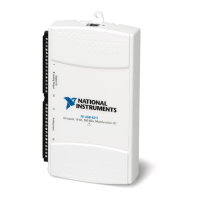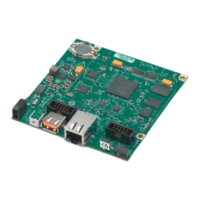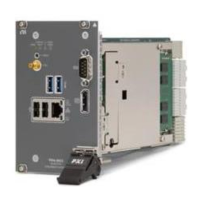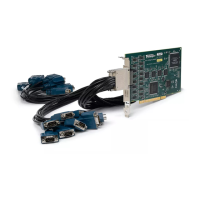3-20 | ni.com
Chapter 3 Counters
Channel Settings
By default, the counter:
• measures pulses on a default PFI terminal. Refer to Chapter 5, Counter Signal Routing and
Clock Generation, for more information.
• measures a high pulse. That is, the counter begins measuring the time from a rising edge to
the next falling edge.
• returns the measurement in the unit of seconds.
You can change these behaviors by configuring DAQmx Channel properties:
• CI.PulseWidth.Term—The signal-to-measure comes from an input terminal. To change
the signal-to-measure, set this property to a different terminal.
• CI.PulseWidth.StartingEdge—Specifies on which edge, rising or falling, to begin the
measurement.
• CI.PulseWidth.Units—Specifies the units of the measurement.
Timing Settings
The timing settings determine when the device measures the signal. Figure 3-20 shows an
example of On-Demand timing.
On-Demand (No Sample Clock)
By default, the counter uses On-Demand timing. The following sequence of events describe On
Demand timing:
1. Software calls DAQmx Start Task.
2. The device measures the first full pulse on the signal-to-measure.
3. The device waits until you call DAQmx Read. The device ignores the signal-to-measure
while waiting.
4. The device returns the measurement.
5. The device then measures the next full pulse on the signal-to-measure.
6. Steps 3, 4, and 5 are repeated.

